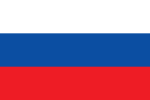Slovak Socialist Republic
Communism in SlovakiaCzechoslovak Socialist RepublicFormer socialist republicsStates and territories disestablished in 1993

The Slovak Socialist Republic (Slovak: Slovenská socialistická republika, SSR) was from 1969 to 1990 a republic within the Czechoslovak Socialist Republic, when previously unitary Czechoslovak state changed into a federation. The name was used from 1 January 1969 until November 1989. The Slovak Republic (Slovak: Slovenská republika, SR) was from 1990 to 1992 a republic within the Czech and Slovak Federative Republic, that is now the independent Slovakia.
Excerpt from the Wikipedia article Slovak Socialist Republic (License: CC BY-SA 3.0, Authors, Images).Slovak Socialist Republic
Viedenská cesta, Bratislava Dvory (District of Bratislava V)
Geographical coordinates (GPS) Address Nearby Places Show on map
Geographical coordinates (GPS)
| Latitude | Longitude |
|---|---|
| N 48.133333333333 ° | E 17.1 ° |
Address
Incheba Expo Bratislava (Trade Fair Bratislava)
Viedenská cesta 3-7
851 01 Bratislava, Dvory (District of Bratislava V)
Region of Bratislava, Slovakia
Open on Google Maps










